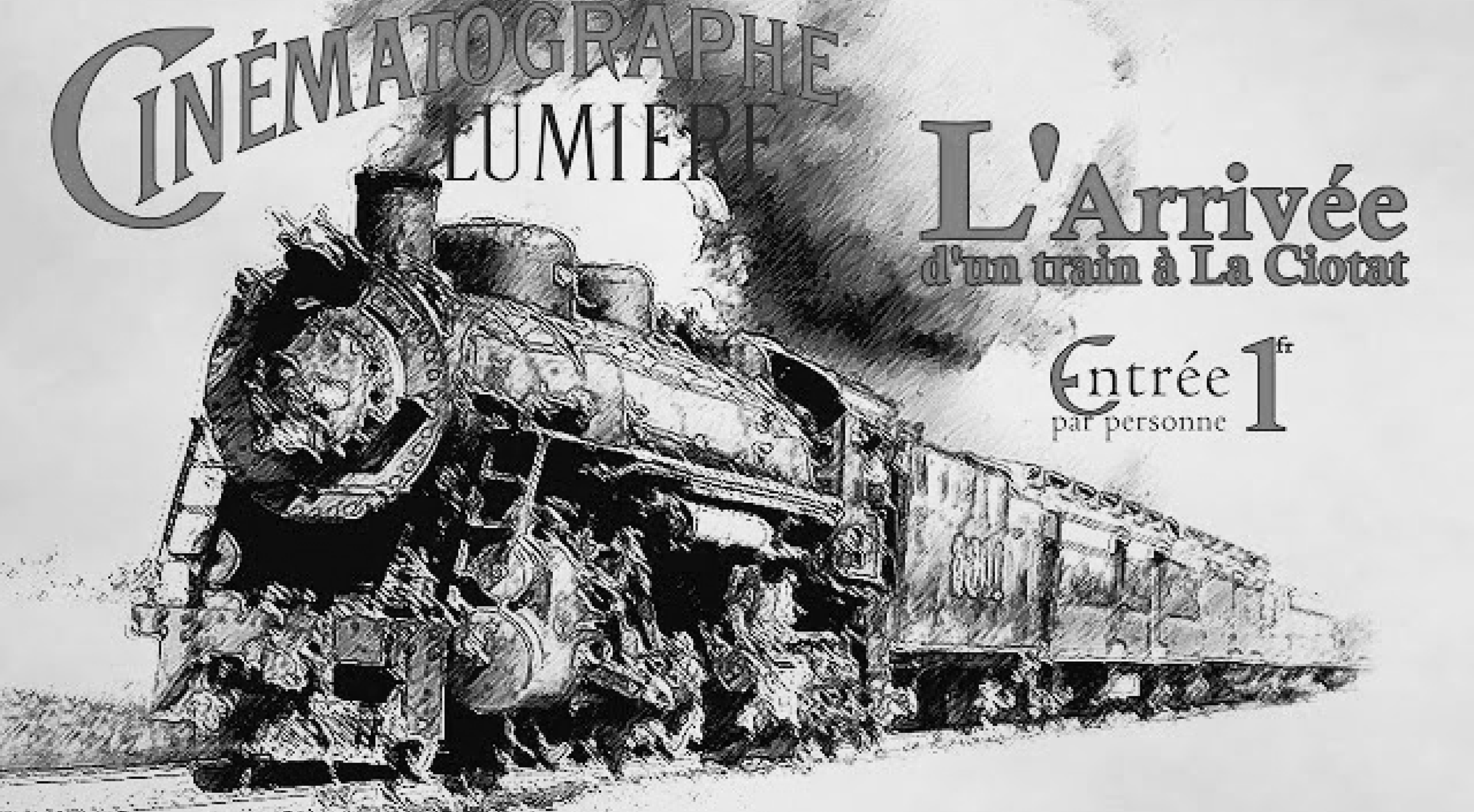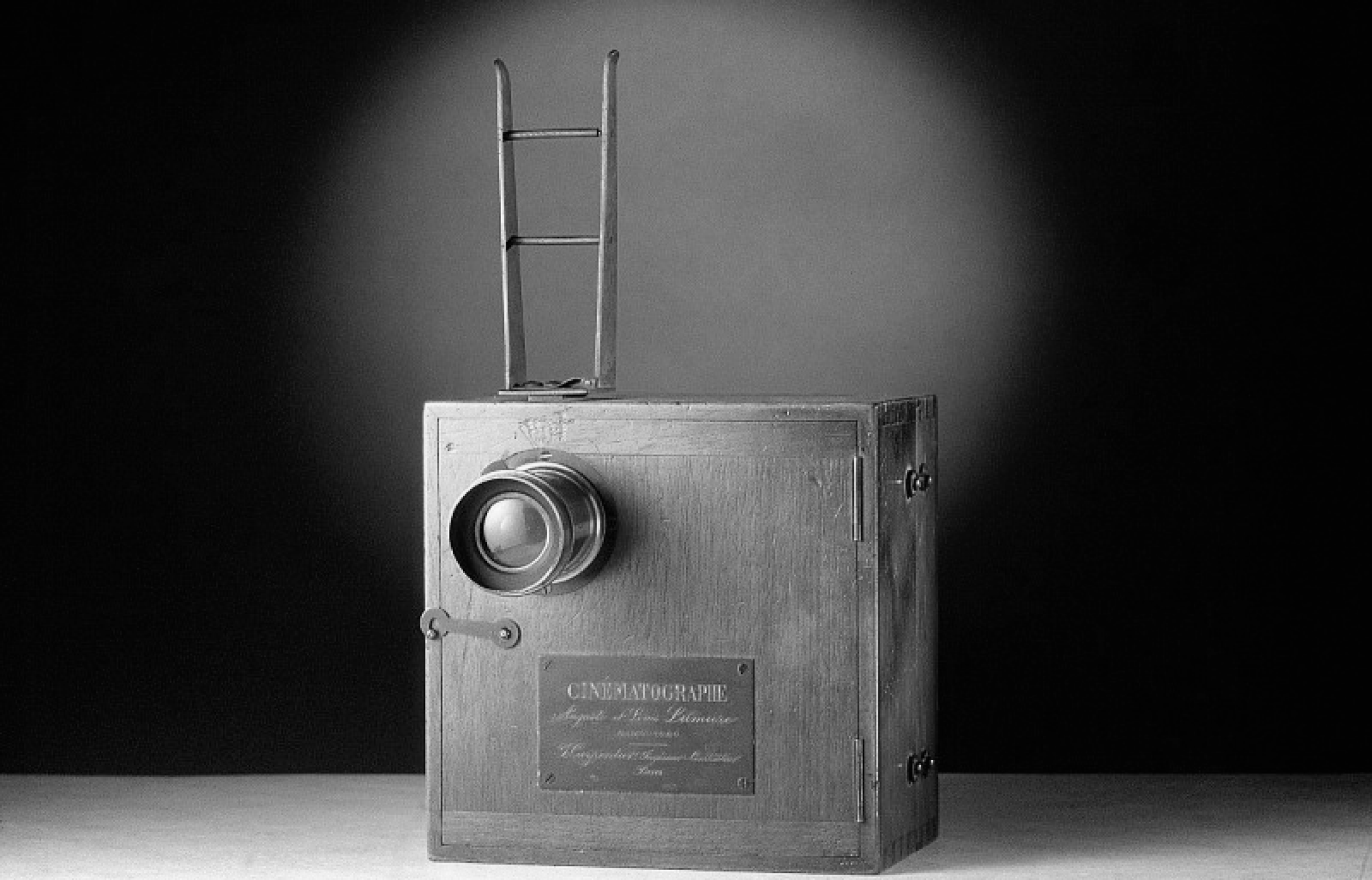The Cinema Comes to Belarus
Belarusians may not have become feature film makers until the 1920s, but they have been involved in “the cinema” since almost the beginning. Belarusian territory was still part of the Russian Empire when the Lumière brothers demonstrated their Cinématographe in 1895 in Paris. Movies arrived in Belarusian territory shortly thereafter.
Libau-Romensky railway station in Minsk, 1871-1900.
Source: https://culture.pl/ru/article/polsha-i-belarus-pokhozhaya-sudba-obschie-mechty
When a certain Mr. Katin arrived in Vitebsk in January of 1898, he faced a problem. He was ready to introduce moving pictures to this Belarusian city, but he had no place to show them.
Katin’s search for a place to show his films led him to, of all places, the Vitebsk Theological Seminary. Katin need the permission Bishop Alexander because the films were “of a frivolous nature.” Katin then placed a small advertisement in the Vitebsk Provincial Gazette. Katin himself probably wondered just how many people would come to his show, which he called “The Last Cinema Screenings.”1
Vitebsk Theological Seminary, end of the XIX century.
Source: http://evitebsk.com/wiki/Витебская_духовная_семинария
On February 5, 18982 about a week after the screenings at the Seminary, the Gazette published another article. It said the audience was treated for about a minute at a time to films with such provocative titles as Female Feud, Bathing, Spanish Dance, Bathing of Negroes, and Gambling.3 One wonders what led the local bishop to approve some of these, considering the titles.
The “Last Cinema Screenings” were just the beginning. Katin continued to organize film shows, either in gymnasiums or in the hall of the yacht club. At a military meeting, unsurprisingly, the officers liked the films French Artillery on Parade and Steeplechase.4
Katin may have been the first in Belarus, but he was not alone in Russia, of course.
In May 1896, before Katin went to Vitebsk, Frenchman Camille Cerf came to St. Petersburg to film the coronation of Nicholas II, in what became Scenes from Coronation of the Czar. The Lumière brothers themselves brought the Cinématographe to the industrial fair at Nizhny Novgorod later that year to demonstrate it to the rest of Russia. Not only did visitors to this largest ever industrial fair get to see the Cinématographe in action, but they got a taste of so much that is still associated with the film industry.
Video of Scenes from Coronation of the Czar, 1896.
Coronation of Nicholas II and Alexandra Feodorovna, the solemn procession in the Kremlin, 1896.
Source: https://en.wikipedia.org/wiki/Coronation_of_Nicholas_II_and_Alexandra_Feodorovna
Yuri Tsivian and Alan Bodger
Probably one of the first films visitors saw is perhaps the most famous “actualitie” ever made: L'arrivée d'un train en gare de La Ciotat. The man credited with opening the first theater is Belarus, Richard Stremer, was there, too. More on him later.
Video of the famous film L'arrivée d'un train en gare de La Ciotat.
Poster of the film *L'arrivée d'un train en gare de La Ciotat.* 1896
Source: https://www.imdb.com/title/tt0000012/
Records are scarce, but probably all over the Russian empire, just like almost everywhere around the world, businessmen and hustlers began to look to the cinematograph to make their fortunes.
Jay Leyda
The Lumière brothers, end of the XIX century.
Source: https://www.history.com/news/the-lumiere-brothers-pioneers-of-cinema
These exhibitors would often dub the building an “electric theater.”7 Sometimes, according to esteemed Russian film historian Boris Likhachev, cinema was not even the main event.
Boris Likhachev
That one day in late January 1898, Belarusian film goers had their first taste of “the flickers.” Katin, after this, and like so many other pioneers of the cinema, later disappeared into history.
Lumière Cinématographe, Smithsonian Institution, National Museum of American History, SIA-94-4437.
Source: https://americanhistory.si.edu/collections/nmah_759313
Lumière Cinématographe, Smithsonian Institution, National Museum of American History, SIA-94-4436.
Source: https://americanhistory.si.edu/collections/nmah_759313
Louis Poyet demonstrating the use of a Cinématographe.
Source: Public Domain, via Wikimedia Commons
1 Кирик, Сергей (Kirik, Sergey). «Во время первых показов люди в панике выбегали из зала. С чего начиналось кино в Беларуси» [“During the First Screenings, People Ran Out of the Hall in Panic: How Cinema Began in Belarus”]. 1prof.by, 24 Sept. 2021, www.1prof.by/news/vo-vremya-pervykh-pokazov-lyudi-v-panike-vybegali-iz-zala-s-chego-nachinalos-kino-v-belarusi/ Accessed 31 Jul. 2025.
2 Ibid.
3 Ibid.
4 Ibid.
5 Yuri Tsivian and Alan Bodger, “Early Russian Cinema and Its Public,” Historical Journal of Film, Radio and Television, vol. 11, no. 2, 1991, pp. 105–120. Taylor & Francis Online, https://doi.org/10.1080/01439689100260131
6 Jay Leyda, Kino: A History of the Russian and Soviet Film. George Allen and Unwin, 1960, p. 24.
7
"Electric Theater". Los Angeles Theaters, 19 Feb. 2019,
https://losangelestheatres.blogspot.com/2019/02/electric-theatre.html Accessed 31 Jul. 2025.
"The Electric Theater". Atlas Obscura, https://www.atlasobscura.com/places/the-electric-theater Accessed 31 July 2025.
"Electric Theatre". Oregon Theater Project, https://oregontheaterproject.uoregon.edu/theaters/electric-theatre-0 Accessed 31 July 2025.
"Electric Theatres". HISTORY Londons Silent Cinemas, https://www.londonssilentcinemas.com/history Accessed 31 Jul. 2025.
8 Лихачев, Борис С. (Likachev, Boris S.) Лихачев, Борис С. Кино в России (1896–1926) [Cinema in Russia, 1896–1926]. Академия (Academia), 1927.








